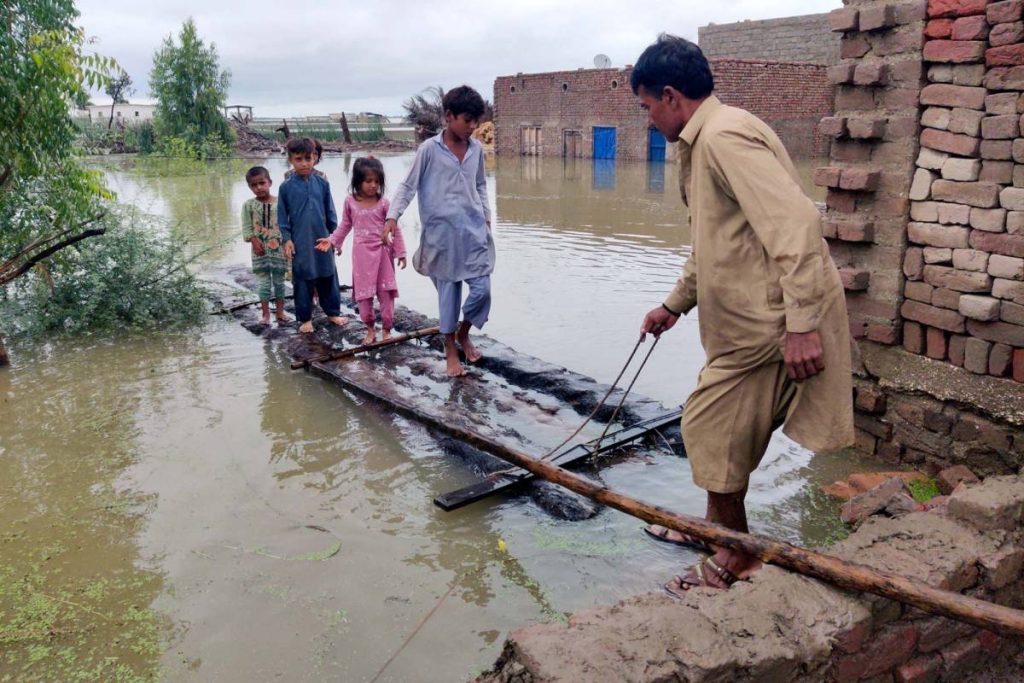The European Space Agency (ESA) released stark images based on data captured by its Copernicus satellite…reports Asian Lite News
Aid workers have appealed for urgent donations to fight the “absolutely devastating” impact of flooding in Pakistan, as new satellite images appeared to confirm that a third of the country is now under water, media reports said.
As the UK’s Disasters Emergency Committee (DEC) launched an appeal to raise funds for the 33 million people affected by the floods in Pakistan, the European Space Agency (ESA) released stark images based on data captured by its Copernicus satellite, The Guardian reported.
The images appear to confirm the Pakistani government’s assessment that more than a third of the country � an area roughly the size of the UK � has been submerged by monsoon rainfall, estimated to have been 10 times more severe than usual, the report said.
“The Indus River has overflowed, effectively creating a long lake, tens of kilometres wide,” ESA said in a statement.

The floods have claimed more than 1,100 lives, including 399 children, destroyed more than a million homes and swept away crops, livestock and major infrastructure such as roads and bridges.
At least 1,186 people have died since June 14 from the rains and floods, Geo News report citing National Disaster Management Authority’s (NDMA’s) statement.
On Thursday, Saleh Saeed, chief executive of the DEC, the umbrella organisation for 15 leading UK aid charities, implored the British public to help.
“Time is critical, with conditions expected to get worse as the rains continue. We are urging everyone: please give whatever you can,” he said.
33 million people – including approximately 16 million children – have been affected by this year’s heavy monsoon rains in Pakistan, which have brought devastating rains, floods and landslides.
“The heavy monsoon rains in Pakistan which started in mid-July 2022 are continuing in many parts of the country and have affected 116 districts (75 per cent) out of 154 districts in Pakistan. The most affected province is Sindh, followed by Balochistan,” the WHO said in a report.
“As of 25 August 2022, 33+ million people have been affected. 6.4+ million people are in dire need of humanitarian aid, including 421 000 refugees. Over a thousand lives have been lost and almost 15000 people injured,” the UN agency added.
According to WHO, health facilities in the country have been severely affected by the unprecedented flood situation.
“As of August 28, 2022, 888 health facilities have been damaged in the country of which 180 of them are completely damaged. Access to health facilities, health care workers, and essential medicines and medical supplies remain the main health challenges for now,” the WHO said.

The global health body said the country’s health system is already battling multiple concurrent health threats including COVID-19, and outbreaks of cholera, typhoid, measles, leishmaniasis and HIV.
Even before the current floods, there was a significant disparity in access to health services between rural and urban areas. The current situation will highly likely increase the spread of disease especially if response capacities are hindered.
On Tuesday, the “2022 Pakistan Floods Response Plan (FRP)” was jointly launched by the Government of Pakistan and the United Nations, simultaneously in Islamabad and Geneva, the United Nations Office for the Coordination of Humanitarian Affairs (UNOCHA) said.
The FRP is being launched against the backdrop of devastating rains, floods and landslides that have impacted more than 33 million people in different parts of Pakistan, OCHA said in a statement.

Leave a Reply